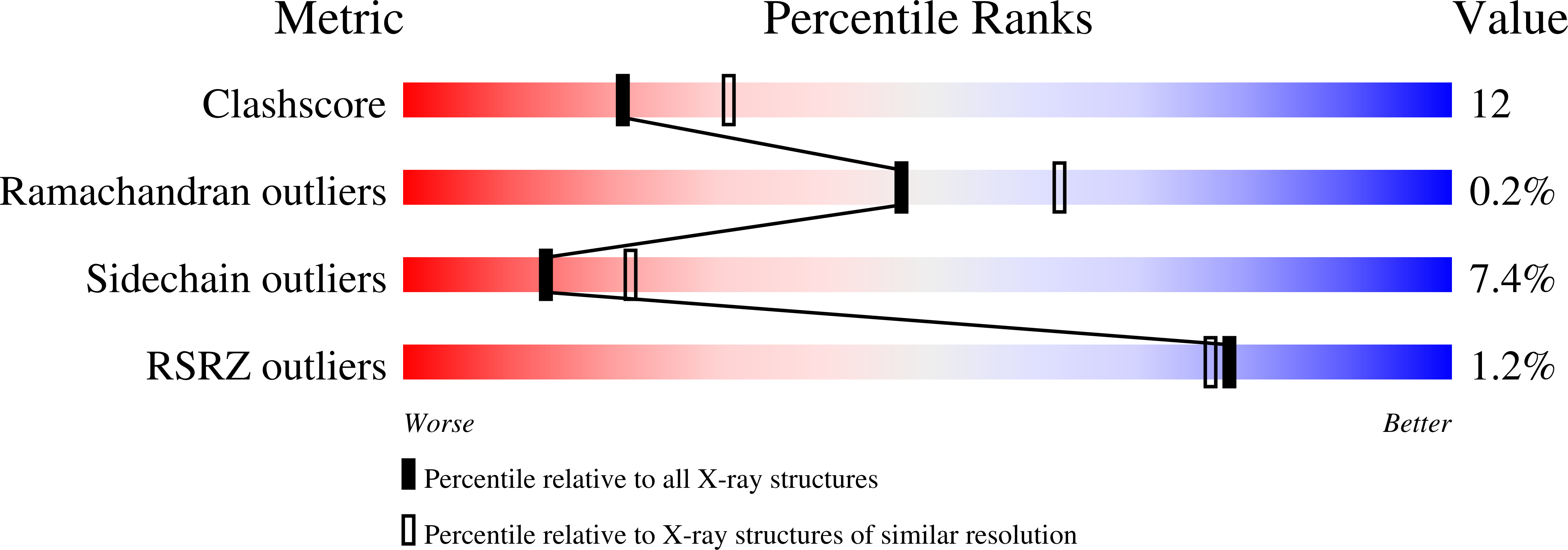Covalent Flavinylation is Essential for Efficient Redox Catalysis in Vanillyl-Alcohol Oxidase
Fraaije, M.W., Van Den Heuvel, R.H.H., Van Berkel, W.J., Mattevi, A.(1999) J Biol Chem 274: 35514
- PubMed: 10585424
- DOI: https://doi.org/10.1074/jbc.274.50.35514
- Primary Citation of Related Structures:
1QLT, 1QLU - PubMed Abstract:
By mutating the target residue of covalent flavinylation in vanillyl-alcohol oxidase, the functional role of the histidyl-FAD bond was studied. Three His(422) mutants (H422A, H422T, and H422C) were purified, which all contained tightly but noncovalently bound FAD. Steady state kinetics revealed that the mutants have retained enzyme activity, although the turnover rates have decreased by 1 order of magnitude. Stopped-flow analysis showed that the H422A mutant is still able to form a stable binary complex of reduced enzyme and a quinone methide product intermediate, a crucial step during vanillyl-alcohol oxidase-mediated catalysis. The only significant change in the catalytic cycle of the H422A mutant is a marked decrease in reduction rate. Redox potentials of both wild type and H422A vanillyl-alcohol oxidase have been determined. During reduction of H422A, a large portion of the neutral flavin semiquinone is observed. Using suitable reference dyes, the redox potentials for the two one-electron couples have been determined: -17 and -113 mV. Reduction of wild type enzyme did not result in any formation of flavin semiquinone and revealed a remarkably high redox potential of +55 mV. The marked decrease in redox potential caused by the missing covalent histidyl-FAD bond is reflected in the reduced rate of substrate-mediated flavin reduction limiting the turnover rate. Elucidation of the crystal structure of the H422A mutant established that deletion of the histidyl-FAD bond did not result in any significant structural changes. These results clearly indicate that covalent interaction of the isoalloxazine ring with the protein moiety can markedly increase the redox potential of the flavin cofactor, thereby facilitating redox catalysis. Thus, formation of a histidyl-FAD bond in specific flavoenzymes might have evolved as a way to contribute to the enhancement of their oxidative power.
Organizational Affiliation:
Department of Genetics, University of Pavia, via Abbiategrasso 207, 27100 Pavia, Italy. M.W.Fraaije@chem.rug.nl
















